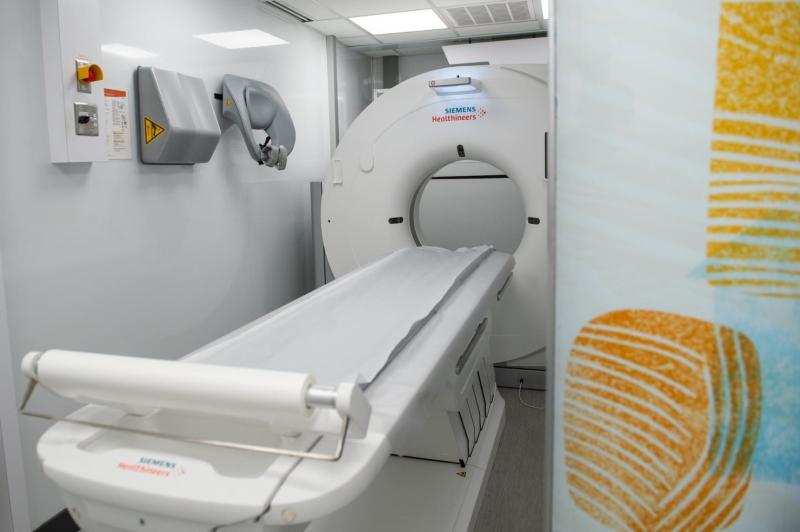Early detection is one of the most powerful tools we have in treating lung cancer. Yet, many people who are eligible for screening are never offered it or aren’t sure whether they qualify. At Columbia, our Lung Cancer Screening Program is designed to make that process easier, clearer, and more supportive from the very first conversation.
We spoke with Desireé Darrisaw, NP, Lung Screening Program Coordinator, about how screening works, what to expect, and how her team helps patients navigate decisions with compassion, clarity, and continuity of care.
What is your role in the lung screening program? How do you support patients?
As the lung screening program coordinator, we get referrals from primary care providers and specialists, and we start the conversation with patients. For those who’ve never heard of lung screening, that’s my opportunity to explain that screening is important. After talking with them about their smoking history, I explain that they fit into a specific screening criteria.
I compare it to other early cancer detection tools like mammograms and colonoscopies. I explain what we look for, I talk about incidental findings, and then I schedule the scan.
Once results are in, I review the report with them line by line. I always reassure them that this is collaborative. We’re not taking them from their primary care doctor; we just want to make sure they stay safe, healthy, and informed.
Do you work primarily with newly screened patients, or throughout treatment as well?
Mostly what I do is screening. But if we identify a concerning nodule, the beauty of this program is that we can usher patients right into evaluation with the thoracic surgery team. I’ve already spoken with them before their scan and after, so there’s continuity.
I review imaging with them, talk through why we’re concerned, and what additional tests are needed. Then Dr. Stanifer comes in, and we move forward together. If patients go to surgery, we follow them post-op and through surveillance. And if they need oncology instead, we walk them right down the hallway. The goal is to prevent patients from ever falling through the cracks.
What are the most common misconceptions about lung cancer screening?
The biggest misconception is symptoms. Many patients think they need to have symptoms to get screened. But screening is most effective when people don’t have symptoms.
Another big challenge is fear of the unknown. Some patients are already pre-grieving the possibility of bad news. I tell them: if we find something small, we watch it. If we find something that needs attention, we are here to guide you through every step.
What does multidisciplinary care look like in practice?
It’s truly multidisciplinary. We’re part of thoracic surgery, but we work closely with interventional pulmonology, general pulmonology, thoracic oncology, and primary care.
We communicate constantly, sometimes literally by walking down the hall. The idea is that we treat findings seriously, do the full work-up, and make sure patients don’t get lost between departments.
How do you help patients prepare for surgery?
Once we know surgery is the best option, Dr. Stanifer explains exactly what he’s going to do—he’ll draw the lung and show where the nodule is. Many of our lung surgeries are video assisted, so patients often have small incisions rather than a large one.
We talk about length of stay, pain management, recovery expectations, and signs to watch for. We encourage patients to bring support people and write down questions. We want them to feel supported, not overwhelmed.
What if a patient isn’t ready for surgery yet?
We never pressure patients. Sometimes finances are a concern, or they need more time. In those cases, we may start with a biopsy through interventional pulmonology to get an answer first.
Once we have the diagnosis, we can talk about next steps together.
What’s changing most quickly in lung cancer care right now?
More people are becoming proactive. There’s more awareness, more conversation, more willingness to screen early and move toward surgery when it’s the right option. And from a surgical standpoint, minimally invasive lung surgery has changed care in a big way.
What gives you hope?
The conversation is happening. We’re actually breaking down barriers. We’re having tough conversations with compassion too. And when you have a team that loves this work, patients feel that.
Interested in Lung Cancer Screening?
If you’re unsure whether you qualify, we can help you find out.
You don’t need a referral to ask questions.
Call the Lung Screening Program: (212) 305-0050
Learn more here.

